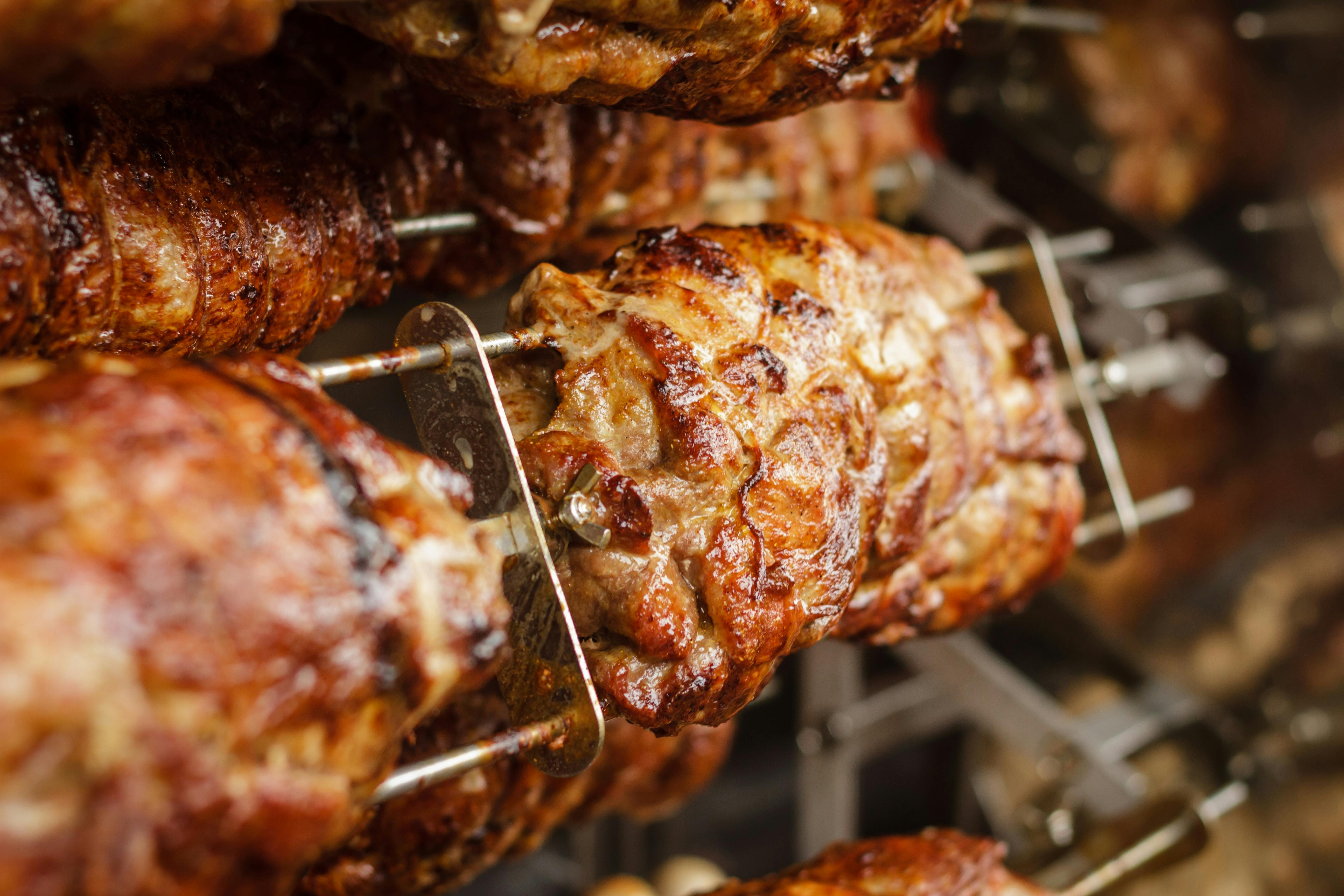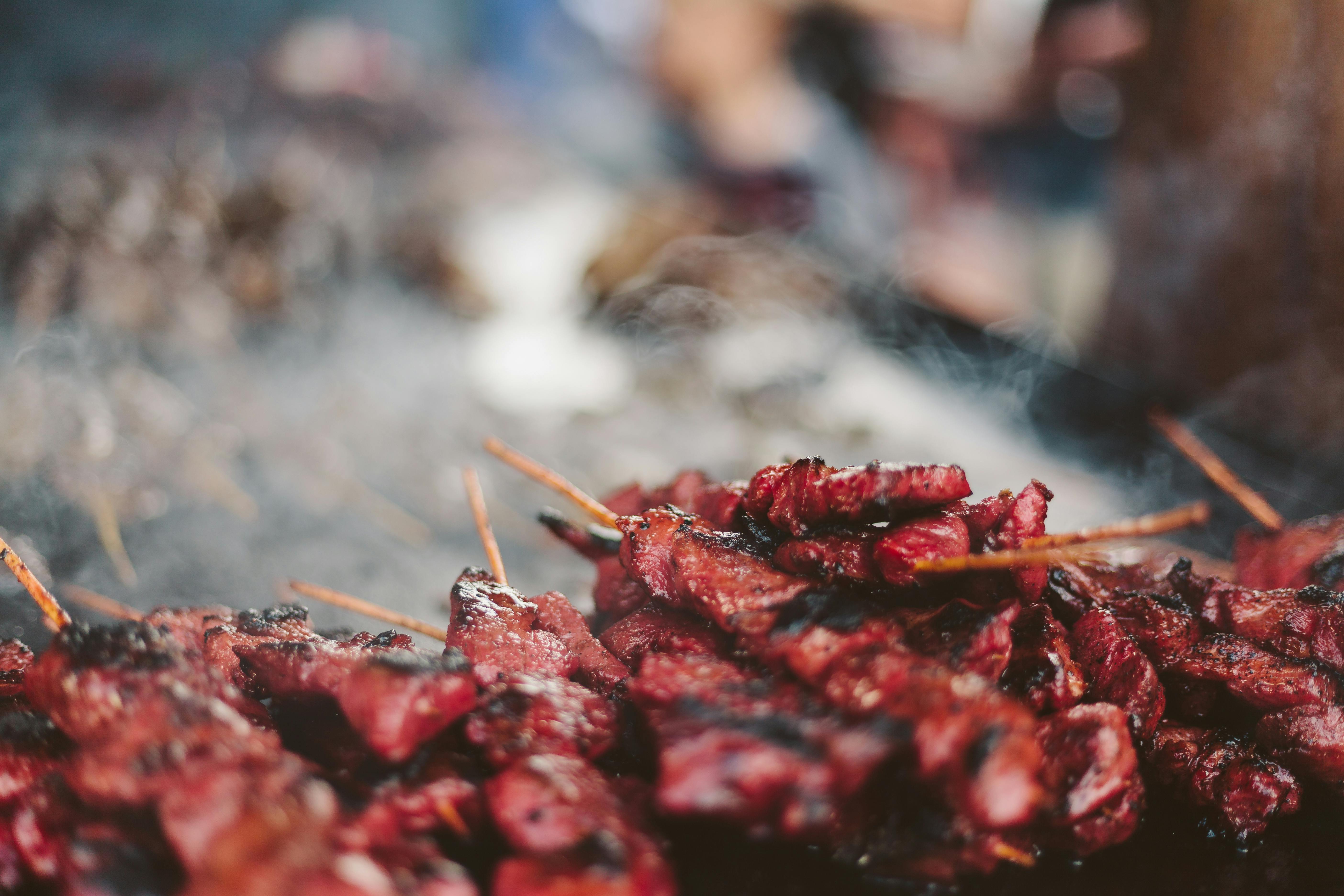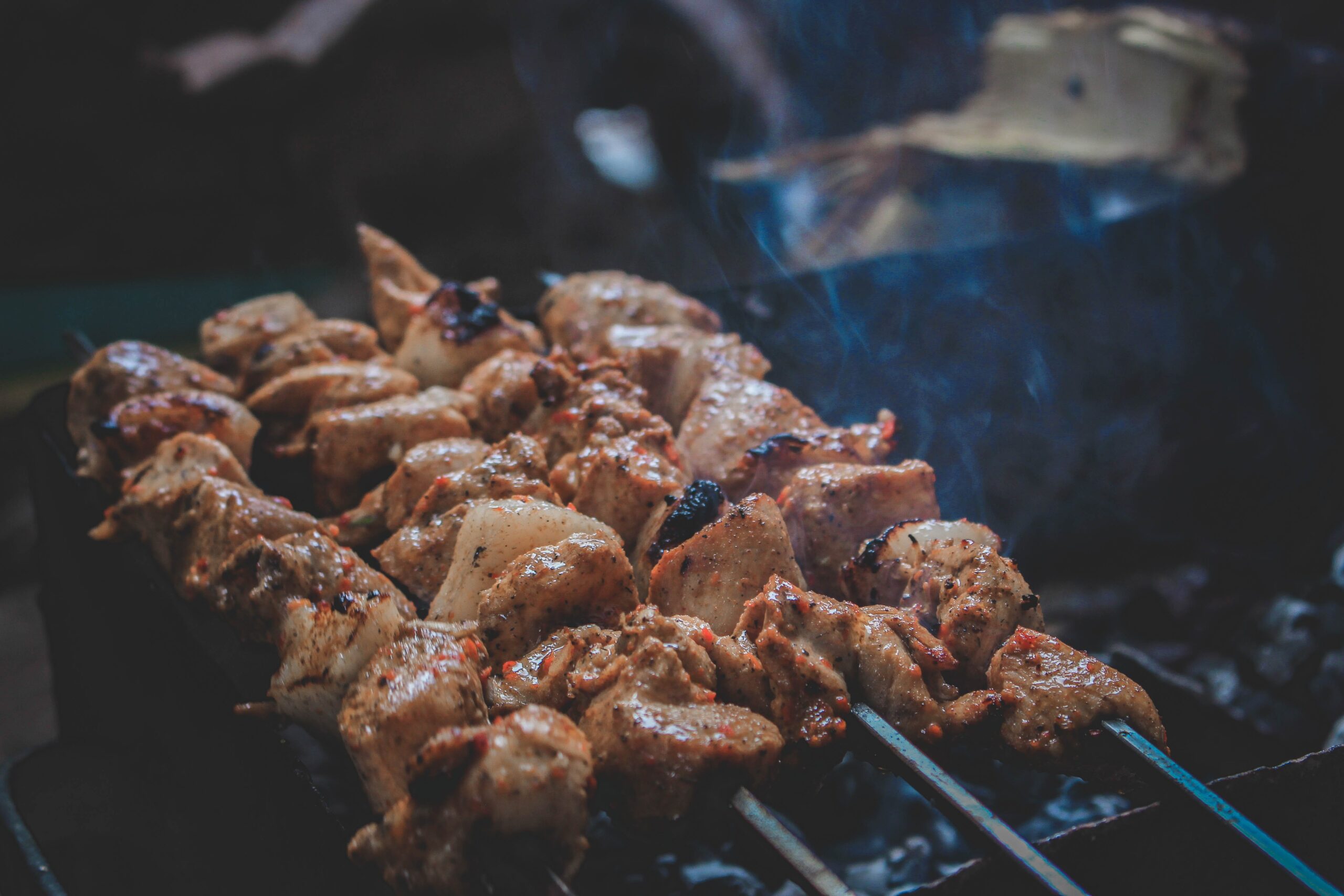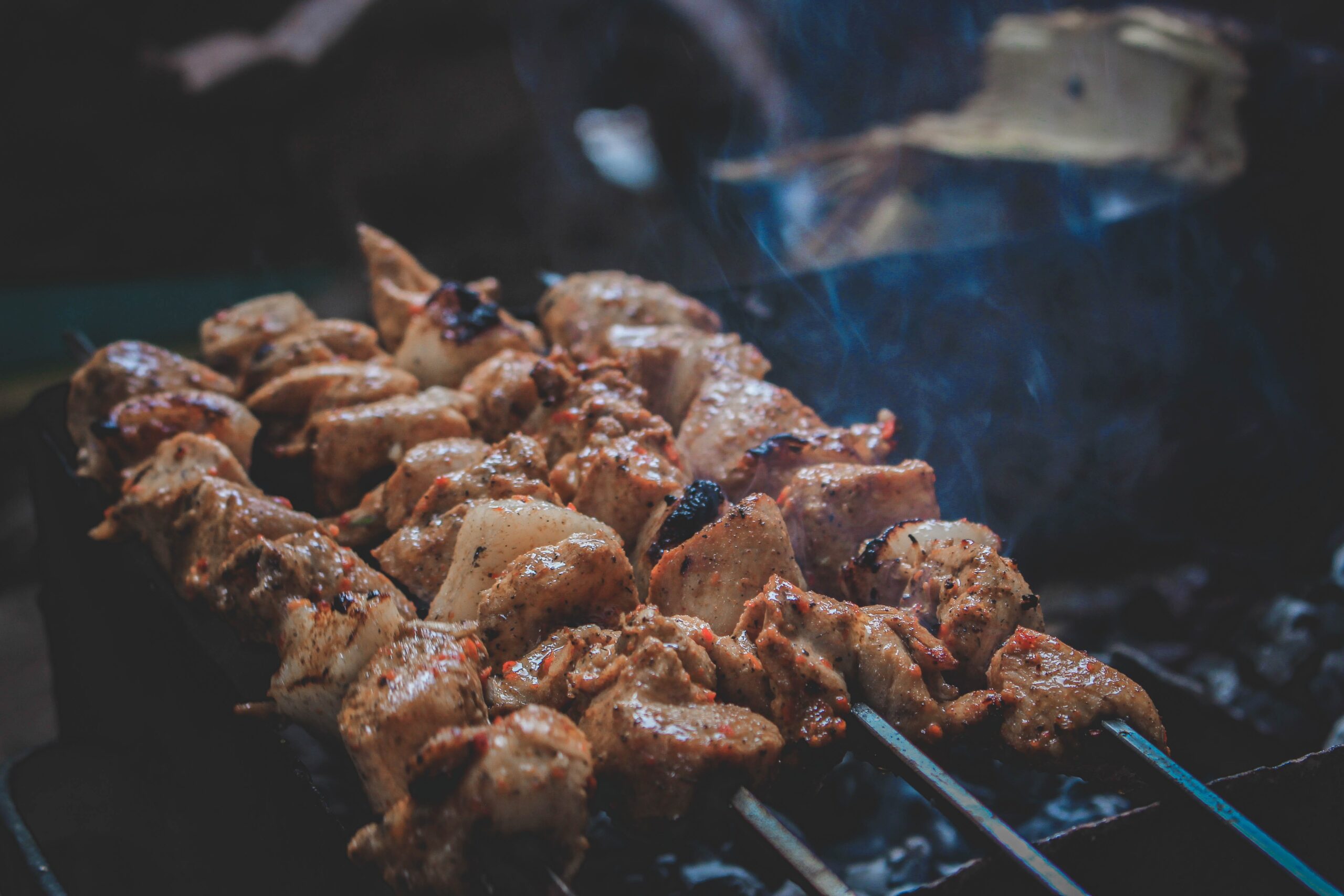In the world of culinary delights, few techniques are as revered and beloved as the art of smoking meats. From tender and juicy cuts of beef to succulent and mouthwatering racks of ribs, there is something truly magical about the flavors and aromas that are created when meat is gently cooked in a cloud of wood smoke. With Tastepan’s expert cooking tips and techniques, you can unlock the secrets of this time-honored tradition and become a master of the grill. So, grab your apron, fire up the smoker, and get ready to embark on a flavorful journey into the realm of BBQ perfection.

Choosing the Right Meat
When it comes to smoking meats, choosing the right cut is essential. Different cuts have varying levels of tenderness and fat content, which can greatly affect the outcome of your smoked meat. For example, fattier cuts like pork shoulder or beef brisket are well-suited for smoking as the fat helps keep the meat moist and adds flavor. Leaner cuts like chicken breast or pork tenderloin may require extra attention to avoid drying out.
Knowing the marbling in the meat is also important. Marbling refers to the small flecks of fat throughout the muscle fibers. More marbling generally means a juicier and more flavorful result when smoking. Look for cuts that have a good amount of marbling for optimal results.
Another consideration when choosing meat for smoking is the size. Larger cuts tend to be more forgiving as they have more surface area for smoke to penetrate, resulting in a more flavorful end product. However, larger cuts also require more time to smoke. If you’re short on time, smaller cuts like ribs or chops can still be delicious when smoked, but may require less cooking time.
Preparing the Meat for Smoking
Before your meat hits the smoker, it’s essential to give it some necessary preparation. Start by trimming excess fat from the meat. While fat adds flavor, excessive amounts can cause flare-ups and result in burnt or charred spots. Trim the fat to about a quarter-inch thickness to ensure a balance of flavor and juiciness.
Next, apply a dry rub to enhance the flavor of the meat. A dry rub typically consists of a combination of salt, pepper, herbs, and spices. Ensure that the rub is evenly distributed and well-coated on all sides of the meat. This not only adds flavor but also helps to create a beautiful crust, known as the bark, when smoked.
After applying the dry rub, let the meat marinate for a while. This allows the flavors to penetrate the meat and enhances the overall taste. You can choose to leave the meat in the refrigerator overnight or let it marinate for a few hours before smoking. The longer the marination time, the more pronounced the flavors will be.

Selecting the Right Wood for Smoking
The choice of wood plays a significant role in the flavor profile of your smoked meat. Different types of wood impart distinct flavors, so it’s important to know the differences and choose the right one for your desired taste.
Common types of smoking woods include hickory, mesquite, apple, cherry, and oak. Hickory is known for its strong and smoky flavor, while mesquite provides a bold and intense taste. Apple and cherry woods offer a slightly sweet and fruity flavor profile, making them popular choices for pork and poultry. Oak is a versatile wood that imparts a mild flavor and is suitable for a wide range of meats.
When selecting the right wood, consider the flavor profiles and how they will complement the meat you’re smoking. For example, if you’re smoking beef, you may choose a stronger wood like hickory, whereas a lighter wood like apple or cherry is a better match for poultry or fish.
Maintaining the Smoker
To ensure optimal performance and flavor, it’s important to keep your smoker clean. Regularly clean the interior and grates of your smoker to remove any residue or buildup that can affect the taste of your smoked meat. Use a grill brush or scraper to remove any stuck-on food particles, and wipe down the interior with a damp cloth.
In addition to cleaning, make sure to check and replace the fuel source regularly. Depending on your smoker type, this could be charcoal, wood pellets, or propane. Running out of fuel midway through the smoking process can lead to uneven cooking or even ruin your entire batch of meat. Have extra fuel on hand so you can easily replenish when needed.
Proper ventilation is crucial for maintaining consistent temperatures in your smoker. Ensure that the air vents are clear and functioning properly. This will allow for good airflow and help control the temperature inside the smoker. Be mindful of wind conditions, as strong gusts can affect the temperature inside the smoker. Consider using a windbreak if necessary.

Fire Management
Before you start smoking, make sure your firebox is clean and free of ash or debris. This allows for better heat distribution and prevents any unwanted flavors from clinging to your meat. Use a metal brush or scraper to remove any buildup, and dispose of the ash properly.
Temperature control is essential for successful smoking. Keep an eye on the temperature gauge and make adjustments as necessary to maintain a consistent heat. This can be done by adjusting the airflow or adding more fuel as needed. Aim for a temperature range of around 225-250°F (107-121°C) for most meats. Too low of a temperature may result in undercooked meat, while too high of a temperature can lead to tough and dry results.
To add smoke flavor to your meat, place wood chunks or chips directly onto the hot coals or in a designated smoker box if your smoker has one. The wood will slowly smolder and release aromatic smoke, infusing your meat with delicious flavors. Experiment with different types of wood to find your preferred combination.
Smoking Techniques
When it comes to smoking meats, the phrase “low and slow” comes to mind. This refers to the cooking method of using low temperatures and extended cooking times to achieve tender and flavorful results. Low and slow smoking allows the collagen in the meat to break down slowly, resulting in melt-in-your-mouth texture.
There are two main techniques for smoking: dry smoking and wet smoking. In dry smoking, the meat is cooked directly over the heat source, without any added moisture. This method is ideal for larger cuts of meat that benefit from a longer cooking time. Wet smoking involves using a water pan or spritzing the meat with water or other flavorful liquids during the cooking process. This helps to keep the meat moist and can add additional flavors.
Using a water pan can help regulate the temperature and add moisture to the cooking environment. Simply fill a pan with water and place it in the smoker. The water will evaporate slowly, creating a moist environment that helps prevent the meat from drying out. This technique is particularly useful when smoking leaner cuts of meat that are prone to drying.
Monitoring Internal Temperature
To ensure that your smoked meat is cooked to perfection, it’s important to monitor the internal temperature using a meat thermometer. Insert the thermometer into the thickest part of the meat, being careful to avoid hitting any bones or touching the smoker grates. This will give you an accurate reading of the internal temperature.
Different meats have different desired temperatures for doneness. For example, pork should be cooked to an internal temperature of 145°F (63°C) for medium-rare and 160°F (71°C) for medium. Chicken should reach an internal temperature of 165°F (74°C) to ensure it is fully cooked and safe to eat. Refer to a reliable temperature guide or recipe for the specific temperatures for each type of meat.
Avoid overcooking your meat by removing it from the smoker when it reaches the desired internal temperature. Remember that the meat will continue to cook slightly as it rests, so it’s better to slightly undercook than to overcook. Let the meat rest for a few minutes to allow the juices to redistribute before slicing.
Proper Resting and Slicing
Resting the meat after it comes off the smoker is crucial for retaining moisture and ensuring a tender result. Allow the meat to rest on a cutting board or platter, covered loosely with foil, for about 10-15 minutes. This resting period allows the meat to relax and the juices to redistribute, resulting in a more flavorful and moist final product.
When it’s time to slice your smoked meat, keep in mind the importance of slicing against the grain. The grain refers to the direction of the muscle fibers in the meat. Slicing against the grain means cutting perpendicular to the direction of the fibers, which results in bite-sized pieces that are more tender and easier to chew. Cutting with the grain can make the meat tougher and chewier.
To achieve attractive slices, use a sharp knife and make clean, even cuts. Serve the slices on a platter or arrange them on individual plates, ensuring that they are presented in an appealing manner. Pay attention to the color of the meat and the bark, as they can add visual interest to your dish.
Enhancing Flavors with Sauces and Glazes
Sauces and glazes can take your smoked meats to the next level, adding depth and complexity to the flavors. Experiment with different sauces to find the perfect accompaniment for your smoked meat. Whether it’s a tangy barbecue sauce, a spicy buffalo sauce, or a sweet and savory glaze, there are endless possibilities to explore.
When it comes to applying glazes, timing is crucial. Most glazes contain sugar, which can easily burn and become bitter when exposed to high heat for too long. Apply the glaze during the last 30 minutes of smoking or when the meat is almost done. This allows the glaze to caramelize and develop a beautiful sheen without becoming charred.
Balance is key when it comes to flavors. Consider the sweetness, tanginess, and spiciness of your sauce or glaze and how it complements the flavors of the smoked meat. If the meat itself is already heavily seasoned or flavorful, opt for a milder sauce to avoid overpowering the natural taste. On the other hand, if the meat is relatively mild, a bold and tangy sauce can provide a pleasant contrast.
Serving and Pairing Suggestions
To complete your smoked meat masterpiece, consider appropriate side dishes to accompany the star of the show. Classic barbecue sides like coleslaw, potato salad, cornbread, or baked beans are popular choices that complement the smoky flavors. Consider the flavors and textures of the sides and how they will enhance the overall meal.
Beverage pairings can also elevate the dining experience. A refreshing beer, such as a light lager or a hoppy IPA, can help cut through the richness of smoked meats. If wine is more your style, opt for a medium-bodied red like a Zinfandel or a Malbec. Non-alcoholic options like iced tea or fruit-infused water can provide a refreshing contrast as well.
Lastly, don’t forget about the presentation. Arrange the smoked meat on a platter, garnish with fresh herbs or citrus slices, and consider adding some pickles or other condiments as a finishing touch. A beautifully presented dish not only looks appetizing but also shows your guests the care and effort you put into creating a flavorful barbecue experience.
In conclusion, the art of smoking meats combines choosing the right meat, preparing it properly, selecting the ideal wood, maintaining the smoker, managing the fire, using the right smoking techniques, monitoring internal temperatures, resting and slicing the meat correctly, enhancing flavors with sauces and glazes, and serving and pairing the smoked meat with appropriate accompaniments. By following these comprehensive steps and tips, you’re sure to create flavorful and memorable smoked meat dishes that will impress your family and friends. So grab your apron, fire up the smoker, and get ready to indulge in the delicious world of smoked meats!

